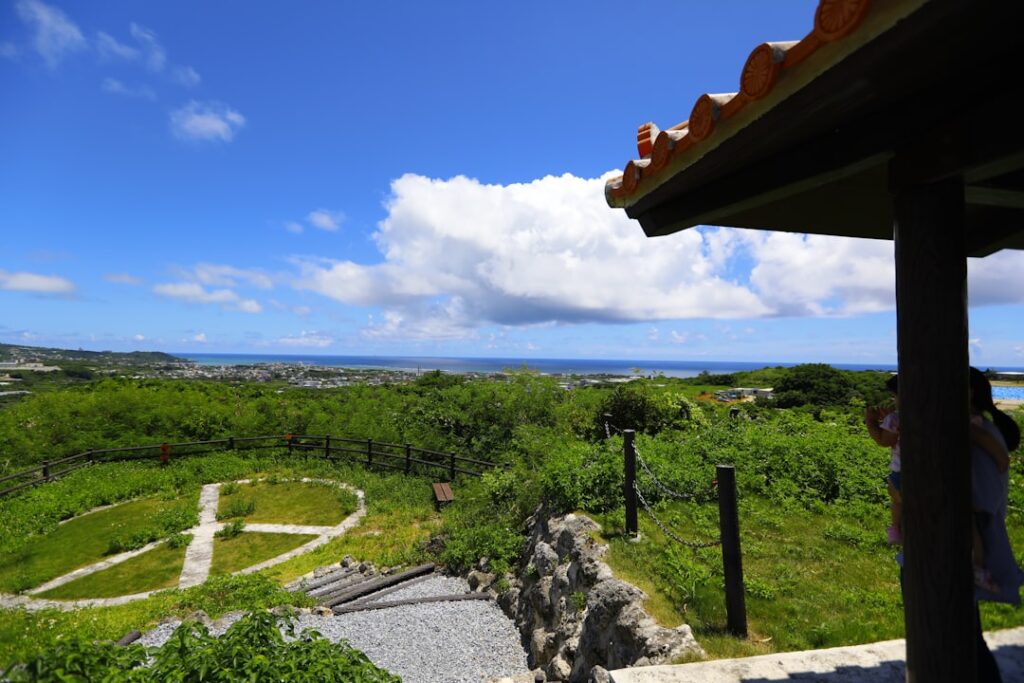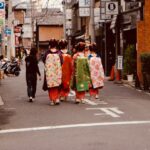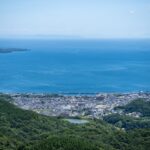If you’re seeking an escape from Japan’s familiar hotspots and looking to immerse yourself in the idyllic natural tapestry that the country protects so well, this guide to Japan’s untouched eco-islands is for you. Far from the crowds, the islands of Okinawa and the Seto Inland Sea harbor eco-minded communities, breathtaking landscapes, and sustainable experiences designed to both humble and inspire travelers. Discover the forgotten beauty and resilience of these remote communities, and let each island’s spirit of sustainability transform your journey.
Okinawa’s Remote Islands: Nature’s Sanctuary and a Model for Sustainable Tourism

Just a short ferry or domestic flight away from Okinawa’s main island, the lesser-known islands like Kumejima and Tokashiki beckon with translucent turquoise waters, coral reefs, and untouched forests. On Kume Island, visitors snorkel above kaleidoscopic reefs or walk the shimmering sandbars of Hatenohama Beach, all while initiatives such as coral restoration and beach cleanup programs preserve the delicate ecosystem. Tokashiki Island, part of the Kerama archipelago, uses strict visitor limits and eco-guides to prevent overtourism and encourage responsible snorkeling, diving, and trekking. Here, hospitality goes hand-in-hand with environmental stewardship, ensuring this paradise remains pristine for generations to come.
Eco-Tourism and Revitalization Projects in the Seto Inland Sea Islands

The Seto Inland Sea is peppered with small, often overlooked islands; Naoshima, Inujima, and Shodoshima have all become pioneers of eco-tourism and rural restoration. Naoshima, once on the brink of rural decline, now draws international travelers with a harmonious blend of contemporary art—the famous Benesse Art Site—and environmental design. Inujima, unique for its post-industrial landscape, has transformed abandoned copper refineries into art installations powered by reclaimed and renewable energy. Shodoshima’s olive groves and bicycle-friendly routes invite slow tourism, while residents revive the land through reforestation and zero-waste initiatives. Each island demonstrates how art, nature, and sustainability can drive rural rebirth.
Traditional Coexistence: Sustainable Cuisine and Island Experiences

On these islands, sustainability is not just a trend—it’s a way of life. Local families still practice nature-friendly agriculture, fishing, and crafts passed down through generations. In Okinawa’s outlying islands, you can join a community fishing trip or learn how to ferment tofu using local soybeans. Inland Sea villages invite visitors to try making udon with spring water or sample hand-pressed olive oil, all in the company of locals who are eager to share their knowledge. Sustainable dining options abound, from garden-to-table izakaya to beach barbecues that spotlight seasonal island produce. Adventures like kayaking, forest bathing, or seasonal festivals let you experience the deep connection between the islands’ rhythms and the land and sea.
Scenic Beaches, Artistic Landmarks, and Photogenic Island Spots

Each island offers a palette of picture-perfect locations waiting to be discovered. Kumejima’s Hatenohama is famed for its perfect white sandbanks, while Tokashiki’s Aharen Beach is a snorkeling paradise. Naoshima and Inujima are dotted with world-class outdoor sculptures and avant-garde museums set against tranquil seascapes—must-sees for any art lover’s itinerary. Shodoshima’s terraced rice fields, olive trees, and rustic inns set the scene for ultimate island relaxation. Whether sunrise at a deserted beach, sunset over the olive groves, or quirky art installations framed by the sea, these islands deliver endless photo opportunities for your travel album.
Getting There and Going Green: Traveler Advice for Sustainable Island Hopping

Reaching these hidden paradises is part of the adventure. Most islands are accessed by efficient ferry networks or short, low-impact domestic flights. Whenever possible, choose public transportation and bicycle rentals on the islands to minimize your carbon footprint. Bring reusable items such as water bottles and bags, and participate in local conservation efforts—be it a one-hour beach cleanup or a workshop on the islands’ delicate ecosystems. Respect posted guidelines for swimming, trekking, and wildlife interaction, and opt for eco-friendly accommodations and tours certified by local councils. By traveling with care and intention, you help ensure future generations will also discover the magic of Japan’s secret eco paradises.
 Just a short ferry or domestic flight away from Okinawa’s main island, the lesser-known islands like Kumejima and Tokashiki beckon with translucent turquoise waters, coral reefs, and untouched forests. On Kume Island, visitors snorkel above kaleidoscopic reefs or walk the shimmering sandbars of Hatenohama Beach, all while initiatives such as coral restoration and beach cleanup programs preserve the delicate ecosystem. Tokashiki Island, part of the Kerama archipelago, uses strict visitor limits and eco-guides to prevent overtourism and encourage responsible snorkeling, diving, and trekking. Here, hospitality goes hand-in-hand with environmental stewardship, ensuring this paradise remains pristine for generations to come.
Eco-Tourism and Revitalization Projects in the Seto Inland Sea Islands
Just a short ferry or domestic flight away from Okinawa’s main island, the lesser-known islands like Kumejima and Tokashiki beckon with translucent turquoise waters, coral reefs, and untouched forests. On Kume Island, visitors snorkel above kaleidoscopic reefs or walk the shimmering sandbars of Hatenohama Beach, all while initiatives such as coral restoration and beach cleanup programs preserve the delicate ecosystem. Tokashiki Island, part of the Kerama archipelago, uses strict visitor limits and eco-guides to prevent overtourism and encourage responsible snorkeling, diving, and trekking. Here, hospitality goes hand-in-hand with environmental stewardship, ensuring this paradise remains pristine for generations to come.
Eco-Tourism and Revitalization Projects in the Seto Inland Sea Islands
 The Seto Inland Sea is peppered with small, often overlooked islands; Naoshima, Inujima, and Shodoshima have all become pioneers of eco-tourism and rural restoration. Naoshima, once on the brink of rural decline, now draws international travelers with a harmonious blend of contemporary art—the famous Benesse Art Site—and environmental design. Inujima, unique for its post-industrial landscape, has transformed abandoned copper refineries into art installations powered by reclaimed and renewable energy. Shodoshima’s olive groves and bicycle-friendly routes invite slow tourism, while residents revive the land through reforestation and zero-waste initiatives. Each island demonstrates how art, nature, and sustainability can drive rural rebirth.
Traditional Coexistence: Sustainable Cuisine and Island Experiences
The Seto Inland Sea is peppered with small, often overlooked islands; Naoshima, Inujima, and Shodoshima have all become pioneers of eco-tourism and rural restoration. Naoshima, once on the brink of rural decline, now draws international travelers with a harmonious blend of contemporary art—the famous Benesse Art Site—and environmental design. Inujima, unique for its post-industrial landscape, has transformed abandoned copper refineries into art installations powered by reclaimed and renewable energy. Shodoshima’s olive groves and bicycle-friendly routes invite slow tourism, while residents revive the land through reforestation and zero-waste initiatives. Each island demonstrates how art, nature, and sustainability can drive rural rebirth.
Traditional Coexistence: Sustainable Cuisine and Island Experiences
 On these islands, sustainability is not just a trend—it’s a way of life. Local families still practice nature-friendly agriculture, fishing, and crafts passed down through generations. In Okinawa’s outlying islands, you can join a community fishing trip or learn how to ferment tofu using local soybeans. Inland Sea villages invite visitors to try making udon with spring water or sample hand-pressed olive oil, all in the company of locals who are eager to share their knowledge. Sustainable dining options abound, from garden-to-table izakaya to beach barbecues that spotlight seasonal island produce. Adventures like kayaking, forest bathing, or seasonal festivals let you experience the deep connection between the islands’ rhythms and the land and sea.
Scenic Beaches, Artistic Landmarks, and Photogenic Island Spots
On these islands, sustainability is not just a trend—it’s a way of life. Local families still practice nature-friendly agriculture, fishing, and crafts passed down through generations. In Okinawa’s outlying islands, you can join a community fishing trip or learn how to ferment tofu using local soybeans. Inland Sea villages invite visitors to try making udon with spring water or sample hand-pressed olive oil, all in the company of locals who are eager to share their knowledge. Sustainable dining options abound, from garden-to-table izakaya to beach barbecues that spotlight seasonal island produce. Adventures like kayaking, forest bathing, or seasonal festivals let you experience the deep connection between the islands’ rhythms and the land and sea.
Scenic Beaches, Artistic Landmarks, and Photogenic Island Spots
 Each island offers a palette of picture-perfect locations waiting to be discovered. Kumejima’s Hatenohama is famed for its perfect white sandbanks, while Tokashiki’s Aharen Beach is a snorkeling paradise. Naoshima and Inujima are dotted with world-class outdoor sculptures and avant-garde museums set against tranquil seascapes—must-sees for any art lover’s itinerary. Shodoshima’s terraced rice fields, olive trees, and rustic inns set the scene for ultimate island relaxation. Whether sunrise at a deserted beach, sunset over the olive groves, or quirky art installations framed by the sea, these islands deliver endless photo opportunities for your travel album.
Getting There and Going Green: Traveler Advice for Sustainable Island Hopping
Each island offers a palette of picture-perfect locations waiting to be discovered. Kumejima’s Hatenohama is famed for its perfect white sandbanks, while Tokashiki’s Aharen Beach is a snorkeling paradise. Naoshima and Inujima are dotted with world-class outdoor sculptures and avant-garde museums set against tranquil seascapes—must-sees for any art lover’s itinerary. Shodoshima’s terraced rice fields, olive trees, and rustic inns set the scene for ultimate island relaxation. Whether sunrise at a deserted beach, sunset over the olive groves, or quirky art installations framed by the sea, these islands deliver endless photo opportunities for your travel album.
Getting There and Going Green: Traveler Advice for Sustainable Island Hopping
 Reaching these hidden paradises is part of the adventure. Most islands are accessed by efficient ferry networks or short, low-impact domestic flights. Whenever possible, choose public transportation and bicycle rentals on the islands to minimize your carbon footprint. Bring reusable items such as water bottles and bags, and participate in local conservation efforts—be it a one-hour beach cleanup or a workshop on the islands’ delicate ecosystems. Respect posted guidelines for swimming, trekking, and wildlife interaction, and opt for eco-friendly accommodations and tours certified by local councils. By traveling with care and intention, you help ensure future generations will also discover the magic of Japan’s secret eco paradises.
Reaching these hidden paradises is part of the adventure. Most islands are accessed by efficient ferry networks or short, low-impact domestic flights. Whenever possible, choose public transportation and bicycle rentals on the islands to minimize your carbon footprint. Bring reusable items such as water bottles and bags, and participate in local conservation efforts—be it a one-hour beach cleanup or a workshop on the islands’ delicate ecosystems. Respect posted guidelines for swimming, trekking, and wildlife interaction, and opt for eco-friendly accommodations and tours certified by local councils. By traveling with care and intention, you help ensure future generations will also discover the magic of Japan’s secret eco paradises.



